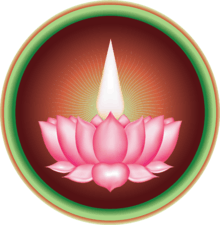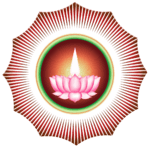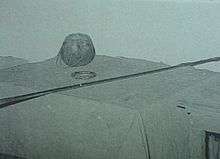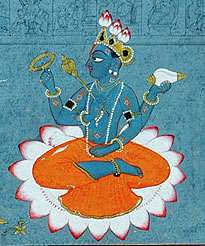Ayya Vaikundar
Lord Ayya Vaikundar (c.1833–c.1851; Tamil: அய்யா வைகுண்டர்), known to his followers as tenth avatar or incarnation of Lord Vishnu, also called as Sriman Narayana Vaikundaswamy or Narayana Pandaram, was a 19th-century social reformer and iconoclast who worked for the upliftment of downtrodden people in the Kingdom of Travancore. He is central to the Hindu denomination of Ayyavazhi, as per holy scripture.
| Vaikundar | |
|---|---|
 Lord Ayya Vaikundar | |
| Other names | Sriman Narayana Vaikundaswamy |
| Sanskrit transliteration | Vaikundar |
| Tamil script | வைகுண்டர் |
| Affiliation | Tenth Avatar of Vishnu |
| Abode | Detchanam, South India, Vaikuntha |
| Weapon | Dharma |
| Texts | Akilathirattu Ammanai, Arul Nool, Vedas |
| Festivals | Vaikunda Jayanthi |
| Personal information | |
| Born | arose from the sea of Tiruchendur, Tiruchendur, India |
| Parents | Goddess Lakshmi (mother) Vishnu (father) |
| Consorts | Saptha Kannimar ; Lekshmi Bhagavathi, Bhoo-madanthai |
Early Avatars
| Part of the series on |
| Ayyavazhi |
|---|
 |
|
Akilathirattu Ammanai
|
Primary Thangals
|
|
Related systems |
|
Akilathirattu says, whenever the yuga ages and major injustice happens, God appears as incarnations to establish dharma by destroying adharma.
At the beginning of Universe, devas gathered in Kailasa and had Amrutham. After having, devas asked Lord Shiva, do we have any enemies. To answer this, Lord Siva lits an agni kunda and went himself into it and sang vedakandam with dance. After completion when he returned from agni kunda, a deadly monster called Kroni (Asura or evil force) was also born inside an agni kunda. After few days, the evil force kroni was trying to destroy Kailasa in order to kill devas. To save devas, Lord Narayana took a penance to get grace of Lord Shiva to destroy Kroni. Lord Shiva appeared and said to Narayana, "Kroni should be cut in six pieces”. In doing so, every piece of him will be born as a monster on the earth, and you will have to incarnate to destroy the other demons.
Lord Narayana consents and chops Kroni into six pieces in Neetiya yuga. Accordingly, Lord Narayana incarnated by the Yuga-Yugas in order to protect the Dharma. So, he appeared in the Chathur Yuga and the Netu Yuga by destroying the asuras such as Gundomasali, Thillai Mallalan, and Mallossy Vaughan that emerged from Kroni's chunk. Later in the Kretha Yuga, Lord incarnated as Muruga, Narasimha and Sri Rama in the Thretha Yuga to destroy the Asuras such as Singamukha Suran, Surapathman, Iranian, and Ravana. In the Dvapara Yuga Lord incarnated as Sri Krishna to destroy the Asuras such as Duryodhana, Takkan and helped the Pandavas to establish the Dharma by establishing the Pandavas Kingdom again. Kroni was refused to listen Lord Narayana’s council, whenever he was born and destroyed. Lord narayana was angry on this and last said to kroni "You will die because of yourself”. Then, at the end of Dvapara Yuga, Lord was known that Kailyan will come, that is the reason he had led the route of forest, while on the way he had taken back the powers of pandavas and left his body on top of the hill and left this world.
Legend
Whenever Lord Narayana incarnates, he gives the details in scriptures about his incarnation. The Akilattirattu is the divine scripture, which gives the details of tenth incarnation of Lord Narayana in form of Vaikundar.
Yes, to understand Rama Avatara, Ramayana was provided to the world. For Krishna Avatara, Mahabharatha was written. To know about Vaikunta Avatara, Akilathirattu was provided to mankind. Vedas, puranas, Itihasas, and also according to the predictions in other religions, to end the cruelties of Kali Yuga and to protect the world, Narayana appeared as Vaikuntar.
Ayyavazhi scripture Akilattirattu gives the world's historical and mythological events. It also gives prophecy of the avatars of Lord Narayana and his coming along with extensive quantity of historical facts. This holy book focus on the “supreme oneness” and narrates the events starting from the creation of the Universe. It also explains us what has happened so far and what is going to happen next. This holy book was compiled by his fifth citar - Hari Gopalan on Kollam Year 1016 at 27th day of Tamil Month Karthikai (10 December 1841 CE, Friday). Hari Goplan received holy Apostle from Lord in his dream, which commissioned him to write the Akilattirattu by giving him the first syllable - “The Kappu”.
Ayyavazhi beliefs
Lord Ayya Vaikundar Avatar
Ayyavazhi followers believe that Lord Vishnu itself incarnated as Lord Ayya Vaikundar during an encounter with a deity Goddess Lakshmi.
As per Akilathirattu, by the words of the devas, the Lord Shiva gave birth to the Kaliyan (Asura), that emerged from last and sixth piece of Kroni's chunk. The Kali yuga begun, when the Kaliyan was born. Kroni’s fifth chunk Duryodhana in the previous yuga was transmigrated as Kaliyan in Kali yuga. After his birth, he got lots of boon from Lord Shiva, which had more powers compared to the powers of the Asura of previous yuga’s. His Powers included reign of the King, various tricks, long life tricks and the Lord’s Chakrayuta. When Kaliyan was on the way to earth, Lord Narayana in the form of Pantaram (Monk) stopped him and challenged him for fight. Kaliyan ignored by saying, “I have lot of powers, If I fight with you, my wife will laugh!”. In response, Lord Narayana asked him to promise - "Going forward he won't fight or disrupt any Pantaram”. Kaliyan agreed and gave the promise – “I will never fight or disrupt any Pantaram, If I will do so, will lose everything and will go to hell". Akilathirattu says, this is the reason behind Lord Narayana’s tenth avatar in Kali yuga as Narayana Pantaram.
It is said that this Kaliyan became the king of earth in various places and tortured the lives of the good people. He created various caste system in order to divide and rule. Collected heavy taxes from public, That is to say, from feather to Mangalasutra, he put heavy taxes and tortured the people lives. Due to this, Lord Narayana got angry and advised Kaliyan to stop torturing the people who are innocent by mind and heart. However, he did not agree and preferred death rather than giving up. As per the vedas of sage Vyasa, In order to stop the rule of Kaliyan and to bring an end to this Kali yuga, Lord Narayana planned to make Vaikundar incarnate as Pantaram.
When the day came, In Kali yuga, the Lord Narayana himself incarnated as Vaikundar during an encounter with a deity Goddess Lakshmi, he was beget inside the sea and arose from the sea of Tiruchendur on Kollam Year 1008 at 20th day of Tamil Month Masi (1st March 1833 CE, Friday). He took the human form as Pantaram at Tharuvaiyur near seashore, this is considered a unique avatar in ayyavazhi mythology. Then he started walking towards Detchanam. This place became a holy place for the devotees of Ayyavazhi and they erected a temple there named Avatharappathi. This event is celebrated during the festival of Ayya Vaikundar Avataram. From the point of incarnation of Vaikundar, it is said that he will destroy Kaliyan and the evil in Kali Yuga. It is also said that he will take all righteous people along with him in the succeeding eighth yuga called as Dharma yuga.
Lord Ayya Vaikundar, who arose from the sea at Thiruchendur (per Akilathirattu Ammanai) on 20th of the Tamil Month of Masi (1_March_1833 CE, Friday) is considered a unique avatar by the followers of Ayyavazhi. Akilam, speaks about it in great detail, as summarized below:
I (Hari Gopalan) am writing these words of Akilathirattu Ammanai with the grace of God!
“ ‘O’ Lord you took avatar for Pandavas and eliminated their enemies.
You attained the abode of Kailasa with anger due to birth of Kaliyan.
Came again to the world to protect santror (good people) and dharma”
“On Masi 1008, I (Lord Narayana) myself appeared as Pantaram on the banks of sea, have taken residence in Theksanapuri as Vaikundar” – Akilathirattu
Akilathirattu says, Lord Narayana himself incarnated as Vaikundar and appeared as Pantaram on the banks of sea. This place became a holy place for the devotees of Ayya vazhi and they erected a temple there named Avathara pathi.
God says this prophecy,
"I (Lord Narayana) took the avatar for yuga trail and became the praise child for Sita.
As a king of Dharma yuga, I am going to rule the world with single command" – Akilathirattu
In each of the five yugas prior to the avatar of Lord Ayya Vaikundar, as each fragment of Kroni (evil or Devil) came into physical form, the Lord Vishnu incarnated as well, destroying them. However, in this the sixth yuga, the evil was called Kali (कलि) (not the Hindu deity),[1] and having no physical form (see Pre-Incarnational Events for this account) he occupied the mind of people of earth as the Mayai (illusion), causing them to behave discourteously. Kaliyan claimed, it was impossible to destroy him by the use of weapons in this yuga as in the previous ones as he held the boon from Supreme god Shiva, that is the reason Lord Narayan, to incarnate as "pandaram" in the world to destroy him.
In the name of Vaikundar, Lord came towards Swamithopu as Pantaram. Lord Vaikundar as a Pantaram, had donned himself in squalid rags, smeared the white mark on forehead, tied a turban on his head and carried a cane. Upon reaching Swamithopu, he undertook a penance for 6 years to get grace and power of Lord Shiva. He got the power to abolish the rule of the evil force Kaliyan from the world and for the subsequent end of Kali yuga. Lord did many mighty miracles. These include, curing all the diseases for those people who came to get blessing from him. He baught eighteen-caste people together for peace and equality. Lord Vaikundar had five disciples (Citars). According to Akilathirattu, the Pandavas of previous Dvapara Yuga were made to take birth in this Kali yuga as Citars of Vaikundar. The holy book Akilathirattu was compiled by his fifth citar - Hari Gopalan alias Sahadeva.
According to Akilam, Vaikundar is 10th avatar of Lord Narayana, also popularly called as “Narayana Pantaram” or “Kalki” alias “Ayya”. Lord's avatar happens to be next to his Krishna avatar. In this avatar, Lord Narayana incarnated as “Trimurti” alias “Siva Narayana”. He had supreme power for the responsibility to destroy the evil of Kali (कलि).
Another view is that Lord Vishnu did not take a human body and showed only a bodily appearance[2] to mankind based upon quotes in Akilam.[3]
Tavam
Upon reaching Poovantanthoppe, (present-day Swamithope), he undertook a penance. The penance consisted of three stages, each spanning two years. A tradition describes his postures during the six-year tavam as follows: during the first two years, he stood inside a six feet deep pit; during the next two years, he squatted on the ground; and during the last two years, he sat on a raised platform. His appearance was squalid, "long and entangled plait of hair" and frayed clothes. He spoke less and subsisted on frugal meals.[4]
Supernatural Abilities
Akilathirattu speaks of his incineration of evil spirits as an important event in Lord Ayya Vaikundar's incarnation. It took place when he was performing his penance, which he had announced to be the means of destroying the kalimayai - the illusory evil force. He gathered the people and caused some of them, both male and female, to be possessed of the evil spirits (peyattam).[5] The possessed ones danced in front of the crowd as if the evil spirits had come upon them. Vaikundar, then, ordered these evil spirits to make an oath, in front of the people, to surrender their powers and incinerate themselves. When he had finished his orders, the dancers fell flat on the ground and burned.[6]
Similarly, Vaikundar performed another action to 'seize the esoteric evil powers'. Akilathirattu says that he took away the powers of those who knew to perform witchcraft, sorcery and other magical rituals. People living in the hills, called as Kanikkarar, were believed to be powerful shamans, having powers to contain or to provoke the demons. Vaikundar, in a trance, made some of them testify that they had surrendered their powers. People grew appreciative of Ayya's actions. They began addressing him as Vaikuntasami. This implied an attribution of divinity to Vaikundar.[5] Vaikundar exhorted the people as follows:
There are no demons, no devils. No ill effects of magical practices,
No disease, no pain and no extortion of taxes,
And, therefore, live courageously.
Five Citars
Lord Vaikundar has five disciples (citars). According to holy scripture Akilathirattu Ammanai the Pandavas of previous Dwapara Yukam was made to take birth in this Kali Yukam as Citars of Vaikundar. They are Dharma Citar, Bhima Citar, Arjunan Citar, Nakulan Citar and Sakatevan Citar.
Vaikundar as Narayana Pandaram
The fame of Vaikundar began to spread in the countries of Travancore and Tirunelveli and he was gradually recognised as a religious person with extraordinary powers.[7] He was addressed as a Pantaram, a religious person hailing from and serving the ordinary folk. Akilathirattu addresses him as Narayana Pantaram.[8]
People came to listen to his teachings and instructions, to be cured by him of different diseases, to witness, worship and serve a religious person. Vaikundar encouraged the people to come together around a well to take a ritual bath, irrespective of caste. He encouraged them to dine together in his presence.[9]

He stressed that he had come to abolish Kali Yukam and to usher in an age of Dharma Yukam, when the now-oppressed and suffering people would be liberated and rule the land under his leadership. 'Uplift of the lowly is dharmam’[10] was a constant refrain in his teachings.[7] People were encouraged to serve as catalysts for the destruction of Kali by transforming themselves to be 'people of Dharma Yukam' and to acquire a new character. The new character would come upon them, he said, if they learned to live with self-respect, social dignity and fearlessness. Underscoring the importance of self-respect and social dignity, he said, ‘if one lives with dignity and self-respect, the kali would destroy itself’ . He said when people grew out of kalimayai, Dharma Yukam would unfold and in that age, he would rule over the people as Dharma Raja, the king of Dharma Yukam.
According to the legend as per holy akilam, when Kaliyan was born, he got the boon from Supreme god Shiva, which has more powers than compare to which he got on previous yuga's. When he was on the way to earth, Lord Narayana was in the form of Pantaram stopped him and asked him to fight with. When Kaliyan was ignored, Lord Narayana asked him to promise, "going forward i won't fight or distrupt any Pantaram. If i will do so, will lose everything and will go to hell".
That is the reason Lord Narayana has taken his tenth avatar on this kali yuga as Narayana Pantaram. [7]
Arrest and imprisonment
He made some controversial statements like mentioning the travancore king as ‘Devil in Ananthapuri’ and the British rule as ‘Rule of White Devils’. Against the background of the growing popularity of Vaikundar and the convergence of people around him in multitudes, a complaint was lodged against him with the king of Travancore. The Travancore king Swathi thirunal arrested Vaikundar in 1838 and imprisoned him at Singarathoppu jail in Travancore. After 110 days of imprisonment, on March 26, 1839 he was released by Swathithirunal on the advise of Thycaud Ayya who was the Guru of Swathi thirunal Maharaj and a disciple of Vaikundar as well.
Post-imprisonment
After returning from the prison, Vaikundar inspired a group of his devotees to undertake a religious exercise called Thuvayal Thavasu.[11][12] He also performed miracles. He married Saptha Kanniyar as Narayanar (see: Marriage with the Seven Virgins), the Seven deities in the form of Ekam (see:Marriage with the Deities). He initiated festivities (see: Festivals and Celebrations)." The deities were made to 'come upon' some of the female devotees who became their human media and a marriage ceremony was performed.[13] Ceremonial processions were held amidst singing, incantations and shouts of joy by the followers. Several rites and rituals were instituted during these occasions.[14]
Lord Ayya Vaikundar at Vaikundam
Later Lord Vaikundar was invited by his devotees to their homes and treated in a grand manner. By way of soliciting his blessings, his devotees carried him to different places. During these occasions, he laid foundations in various places for small shrine-like centres, called Nizhal Thangals. Lord Vaikundar came to recognize five individuals as his closest disciples. Through one of his disciples, Hari Gopalan Citar, he wrote the holy book, called Akilam.[15]
Lord Vaikundar returned to Vaikundam on 3 June 1851. According to Ayyavazhi followers, he has returned to Vaikundam.[16] However, this date is disputed, as Samuel Mateer mentions the year as 1848.[17] As he returned to Vaikundam, his body was interned in a tomb and, around that, a pati (temple) was later built. His devotees continued to visit this site and performed the rituals as they used to do when Vaikundar was bodily present. His life and works remain the foundation of the Ayyavazhi. The head temple of the Ayyavazhi religion is the Swamithoppepathi and is located in the Village of Swamithope.
In popular culture
The film Ayyavazhi released in 2008 was based on the life of Lord Vaikundar. See also
- Vishnu
- Hinduism
- Hindu reform movements
- Hindu Renaissance
- Boons Offered to Kaliyan
- Ayyavazhi mythology
- Ayyavazhi Trinity
- List of Ayyavazhi-related articles
- Kailasapuram Ayya Vaikundar Temple
References
- Patrick 2003, p. 206.
- Thuvarakapathi, p. 37.
- Pathippakam 2004, p. 112.
- Patrick 2003, p. 79 He seems to have spoken less and subsisted on frugal meals.
- Patrick 2003, p. 80.
- Nadar 1989, p. 254-260.
- Patrick 2003, p. 81.
- Nadar 1989, p. 253.
- Nadar 1989, p. 251.
- Nadar 1989, p. 212.
- Nadar 1989, pp. 290-298.
- LMS Report 1838, p. 71.
- Nadar 1989, p. 336-338.
- Patrick 2003, p. 83.
- Pathippakam 2004, p. 4.
- Nadar 1989.
- Mateer 1871, p. 222.
2. Benjamín Preciado-Solís (1984). The Kṛṣṇa Cycle in the Purāṇas: Themes and Motifs in a Heroic Saga. Motilal Banarsidass. p. 40. ISBN 978-0-89581-226-1., Quote: "Within a period of four or five centuries [around the start of the common era], we encounter our major sources of information, all in different versions. The Mahabharata, the Harivamsa, the Visnu Purana, the Ghata Jataka, and the Bala Carita all appear between the first and the fifth century AD, and each of them represents a tradition of a Krsna cycle different from the others".
3. Edward Geoffrey Parrinder (1997). Avatar and Incarnation: The Divine in Human Form in the World's Religions. Oxford: Oneworld. pp. 19–24, 35–38, 75–78, 130–133. ISBN 978-1-85168-130-3.
Sources
- Arunan (1999). Tamilakatil Camuka Cirtirutam Irunuttantu Varalaru. Madurai: Vaihai Publications.CS1 maint: ref=harv (link)
- Chellam, V. T. Thamizaka Varalarum Panpadum.CS1 maint: ref=harv (link)
- LMS Report, 1838
- Manibharathi (1 August 1995). "Samithoppu Ayya Narayana Cuvami". Tina Tanti Kutumba Malar.CS1 maint: ref=harv (link)
- Mateer, Samuel (1871). "The Land of Charity:": A Descriptive Account of Travancore and Its People, with Especial Reference to Missionary Labour. J. Snow and Company.CS1 maint: ref=harv (link)
- Menon, A Sreedhara (1 January 2007). A Survey Of Kerala History. DC Books. ISBN 978-81-264-1578-6.CS1 maint: ref=harv (link)
- Thuvarakapathi, Thechanathu. Thechanathu Thuvarakapathi Akilathirattu Akakorvai.CS1 maint: ref=harv (link)
- "Holy Akilathirattu", R. Hari Gopalan Citar, Thenthamarikualam, 10 December 1841, First Publication 1939
- "Holy Akilathirattu Scripture", R. Gopalakrishnan, Chennai, First Publication 2019, Published by Akilattirattu India Mission
- "Holy Akilathirattu Descriptive Text" Part 2, A. Manibharathi, Chennai, First Publication 2003
- "Holy Akilathirattu Text", T. Balasundaram M.A.,B.Ed. Swamithoppu, Third Publication 2013, Published by Ayya vaikundar Veeman Citar Foundation
- "Holy Akilathirattu Ammani Recitation Text", A. Arisundra Mani, First Publication 2002
External links
| Wikibooks has more on the topic of: Ayya Vaikundar |
| Wikimedia Commons has media related to Ayya Vaikundar. |


